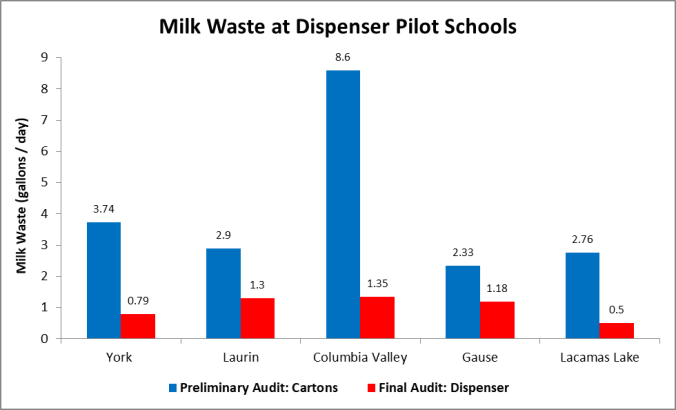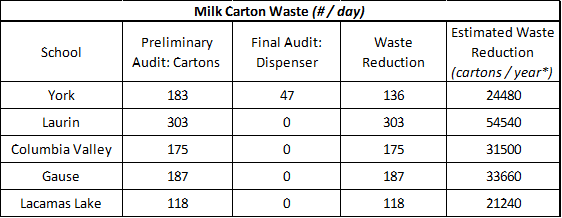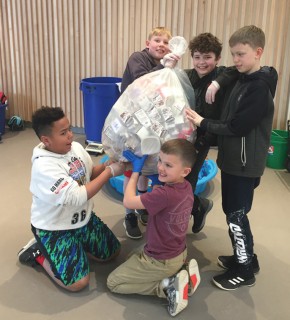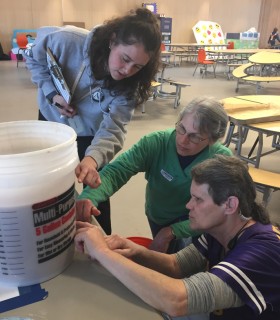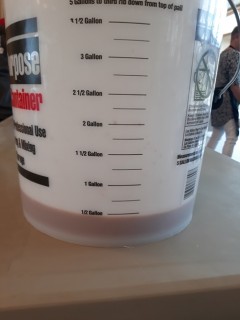Clark County Green News
Milk Dispensers by the Numbers
This has been a big year. Partnering with five schools in four different districts, we conducted a pilot project to see if milk dispensers could help reduce cafeteria waste. Through a grant from the Washington State Department of Ecology, we provided schools with dispensers and washable cups to serve milk in instead of cartons. We measured milk and carton waste before and after the dispensers were installed. With the end of the school year approaching, we just finished up our final waste audits and the results are in.
• Using this data and assuming 180 days in a school year, these schools prevented an average of 548 gallons of milk from being wasted each year!
• It takes 144.2 gallons of water to produce 1 gallon of milk1. Preventing 548 gallons of milk waste means saving 79,021.6 gallons of water.
• The carbon footprint2 of 1 gallon of milk is 17.6 pounds of CO2. Preventing 548 gallons of milk waste also means reducing greenhouse gas emissions by 9,644.8 pounds, or the equivalent emissions from driving 10,696 miles in an average car3.
• All schools showed a significant reduction in carton waste (table 1), with 4 out of the 5 reaching 100% reduction.
• Milk cartons are often tricky to recycle, and reducing their use can have environmental and economic benefits.2. Thoma, G., et al. (2010). Greenhouse Gas Emissions from Production of Fluid Milk in the US. University of Arkansas & Michigan Technological University.
3. EPA. (2017). Greenhouse Gas Equivalencies Calculator. June 5, 2019, https://www.epa.gov/energy/greenhouse-gas-equivalencies-calculator
When you subscribe to the blog, we will send you an e-mail when there are new updates on the site so you wouldn't miss them.

